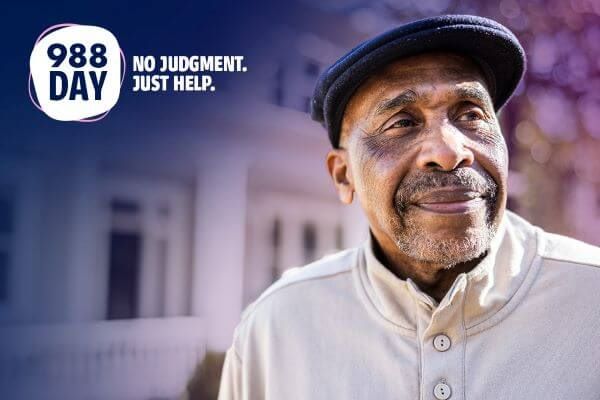
Texas’ performance with the nation’s 988 Suicide & Crisis Lifeline – launched by a 2022 federal law – is seeking to catch up to other states in important areas, according to a new study, as the resource remains underused in part because many physicians and patients are not aware of it.
The 988 number – which provides identical services to the1-800-273-TALK (8255) number still in service – fills an important niche in the behavioral health care system, and “it is specifically designed to address behavioral health crises where 911 really is not,” says Austin psychiatrist Thomas Kim, MD, a consultant to the Texas Medical Association’s Committee on Behavioral Health.
So far, the Texas rollout has seen rough patches. In April and May 2023, for instance, about one-quarter of all calls to the Texas hotline went unanswered, according to a July study by Kaiser Family Foundation (KFF).
But there are signs the growing pains are over. In June, Texas’ in-state answer rate for calls grew to 83%, up 3% from the previous year and comparable to the rates seen in other more populous states, like California and New York.
The 988 number isn’t a care system itself and requires broader behavioral health resources to respond to callers’ needs, Dr. Kim says. That said, 988 can be enormously helpful because callers typically speak with trained counselors who help them or their family members through a potential suicide crisis and can dispatch a mobile team to their location in many cases.
Thanks in part to physician efforts through TMA, behavioral health services in Texas have improved in recent years. However, in many places, the resources needed to respond are still in short supply or simply are not available, he says.
“Whether you talk in terms of physician shortage or the geographic isolation [of patients] or lack of insurance coverage or negative social [drivers] of health – I could go on – there are problems that continue to stoke the behavioral health care crisis that we find ourselves in,” Dr. Kim said.
While more than $1 billion in federal funds helped launch the 988 number, local call centers must secure support from state and local governments to keep it going. To improve the state’s financial model for the hotline, lawmakers could work with industry and establish a novel telecom fee to support 988 as other states have done, according to the KFF study.
Physicians also can work with Texas lawmakers to develop funding for 988 services amid support for other improved behavioral health efforts, Dr. Kim adds. However, he cautions physicians and lawmakers to keep in mind that bolstering 988 services is important but just part of a much-needed larger agenda for strengthening Texas’ behavioral health care system.
In 2021, Texas’ age-adjusted suicide rate was 14.4 per 100,000 people, just over the U.S. rate of 14.2 per 100,000, according to the Centers for Disease Control and Prevention. That is up from 13.4 deaths per 100,000 in 2019 and 2020, says Texas Health and Human Services. Suicide has risen nationally as well, according to CDC. It increased 37% between 2000-2018 and decreased 5% between 2018-2020. However, rates returned to their peak in 2022, CDC says.
National data from the American Foundation for Suicide Prevention in 2022 indicate that white males account for 68.5% of suicide deaths. Firearms were the most common method of death by suicide, accounting for 54.6% of all suicides. In 1999, about six suicides per 100,000 were attributable to self-inflicted firearm violence in Texas. By 2021, the rate was 8.6 per 100,000 for Texas and 8.1 per 100,000 nationally, CDC says.
While physicians are naturally concerned about suicide among patients, the topic also has important professional implications because clinician mental health, substance use, and suicide remain important topics, Dr. Kim says. Physicians in need of services can look into TMA’s and also check out those at local medical societies.